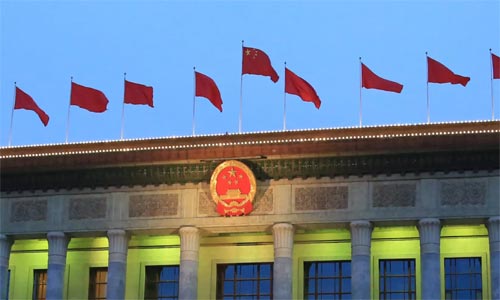Forty years ago, the third plenary session of the 11th Central Committee of the Communist Party of China ushered in courageous endeavor of reform and opening-up which has made incredible headway so far. To rejuvenate the national dream, China hurdled the bulk of national and international barriers and played the best possible role the world has ever seen.
When China started reform and opening-up policy in 1978, its foreign exchange reserves were roughly more than 100 million dollars, Chinese reformist Deng Xiaoping said, “Imagine, one day China may have a foreign reserve of 10 billion dollars. How much can we do with that much of foreign reserve”. Forty years later, China’s foreign reserves are close to 4 trillion dollars.
China has devoted its resources and efforts to building infrastructures and manufacturing capacities and improving the people’s living standard. In turn, China became the world’s second largest economy overtaking Italy, France, Britain, Germany and Japan; the largest car manufacturer; and the largest producer of steel, cement, chemical fiber and more than 100 other major products. By 2014, China became the world’s largest importer of crude oil and the accumulative overseas investment of Chinese energy companies exceeded USD200 billion. China is also the largest exporter of wind power and solar-power equipment in the world.
China has made a significant contribution to the world since it joined the World Trade Organization (WTO) in 2001 when China’s export of goods was $266.1 billion or 4.3 percent of the world’s total. However, it overtook US in 2007 and Germany in 2009 as its export volume had reached $2.27 trillion – 13.76 percent of the world total – in 2015, becoming the largest exporter of goods. And its average contribution rate to world economic growth has reached nearly 30 percent. Likewise, China’s import of services surged from $39.3 billion in 2001 to $467.6 billion in 2017, with an average annual growth of 16.7 percent. The figure was equivalent to nearly 10 percent of the world’s total services import volume.
“In 2017, overseas Chinese-funded enterprises paid $37.6 billion in taxes to the countries where they invested, up 36 percent from the same period last year. At the end of the year, 1.71 million foreign employees were employed, an increase of 370,000 from the end of the previous year,” said Ning Jizhe, deputy director of the National Development and Reform Commission, at Central China International Production Capacity Cooperation Forum and Enterprise Matchmaking Conference in 2018 held in Wuhan, the capital city of Hubei province, on October 19. He added that China attracted $86.5 billion in investment, a year-on-year increase of 6.1 percent, from January to August this year. From January to September this year, non-financial direct overseas investment by Chinese enterprises reached US$82 billion, according to him.
Before 1988, China did not have any highway. But now with 123,000 km of highways, it is ranked first in the world. China also launched its high-speed railway, Beijing-Tianjin Intercity Railway, in 2008 and at the end of 2015, its railway mileage in operation had reached 19,000 km, ranking first in the world.
China has established about 30,000 companies around the globe – with USD6.4 trillion in overseas assets – lifted 800 million Chinese people out of poverty, and the per capita income in China’s urban areas increased from 343 yuan in 1978 to 13,400 yuan.
According to Liu Xiaoming, Chin’s ambassador to the United Kingdom, since adopting the reform and opening-up policy, China has opened up a market of over $1.7 trillion to foreign investment, and invested over $1.2 trillion overseas.
China is one of the most dynamic markets – with more than 1.3 billion consumers and more than $10 trillion demand in goods and services only in the next five years – where enterprises are pushing forward. As the first national level import-themed expo in the world, the expo attracted more than 3,000 companies from 130 countries and regions. The business deals at the expo reached $57.83 billion.
What is more, China has shifted from an agrarian economy to a highly industrial community. Statistics show that in 1978, 70.5 pc of China’s population was engaged in agriculture, 9.1 pc in service, and 17.3 pc in industry. By 2017, only 7.9 pc of population was doing farming, whereas 51.6 pc of the Chinese were engaged in service and 40.5 pc in industry, which is a tremendous change from agriculture to industrialization.
All in all, all the aforementioned China’s tremendous achievements are the result of its reform and opening-up. That is, opening to the outside word is the backbone of China’s development. With this in mind, Chinese officials have reiterated on multiple occasions that its door will never be closed rather it will open wider. Hence, it is a lesson for all nations to practice multilateralism and keep their doors open to one another so as to not only boost trade and economic development but also strengthen people-to-people contacts and friendly relations.
Home » Opinion » The Jaw-dropping Result of China’s Reform and Opening-up
The Jaw-dropping Result of China’s Reform and Opening-up
| Hujjatullah Zia

